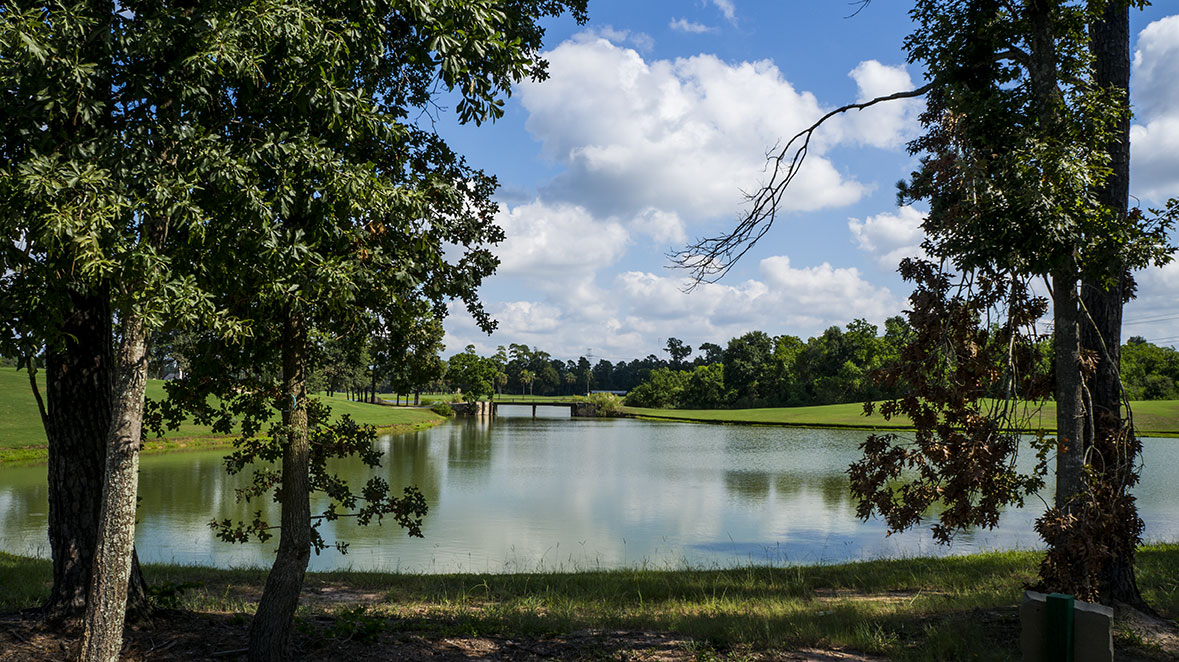For those among us who scoff at the practice of using large quantities of potable water in dry climes or during droughts to irrigate broad sweeps of well manicured links, scoff no more. Golf course superintendents across America are among the best – if not the best – conservationists out there in this time of looming water shortages.
And why wouldn’t golf course managers respect this most precious of all natural resources? After all, it’s the life blood of an almost $80 billion a year industry. If not sourced and utilized properly, a poorly managed water supply can be the death knell to what is first and foremost a viable commercial activity, and second, frequently the most beautiful, environmentally sound, recreational asset in a community.
But why should we use precious potable water to maintain golf courses green for the enjoyment of a tiny portion of our local populace? In fact, we don’t use very much potable water for such purposes. According to the Golf Course Superintendents Association of America (GCSAA), only 14 percent of golf courses utilize water from municipal systems. And golf courses account for only 0.5 percent of all water use annually and just 1½ percent of all irrigated water applied. Recycled water is used by 12 percent of golf facilities; limited by the availability of effluent water and by the lack of water-provider infrastructure to deliver it.
Golf course superintendents utilize many methods to conserve water. They hand water critical areas, use wetting agents to deal with localized turfgrass dry spots, and keep turf drier than in times past. Customers seldom complain about the latter practice. Golfers abhor spongy fairways and delight in the added distance firm, dry fairways provide…but that’s another topic.
Research provides key information…
Already schooled in water conservation practices, groundskeepers’ receptiveness for and utilization of advanced water-use techniques can only benefit golf facilities and the golf industry. Progress continues to be made in a number of areas, including:
- The use of improved soil sensors allow better informed irrigation scheduling decisions. Depending on soil type, slope and other environmental characteristics, some areas of the typical golf course simply need less frequent, less intensive watering.
- Because the supply/demand for water is unique to any given locality, the commitment of time by course managers to work collaboratively with the community leadership is important in the development and improvement of public policy related to such issues.
- Golf courses represent a potential long-term demand for local water treatment facilities. One obvious destination is the local golf course, which can optimize the use of reclaimed water — assuming that the available supply, water quality and costs are sustainable.
- Proper management of turfgrass, which is an effective biological filter to further treat water, is vital. Across the country, golf courses irrigate approximately 80% of the turfgrass acreage they maintain. In the country’s west and southwest regions, where water is even more precious, course managers, generally speaking, irrigate only the turfgrass that comes into play. It follows that irrigation systems should be properly zoned to allow for such precise application.
A shining example…
In January, 2009, one of Texas’ top golf facilities, Horseshoe Bay, appointed Kenneth Gorzycki, CGCS as its Director of Agronomy. He is a certified golf course superintendent (CGCS by GCSAA) with impressive credentials, and is a proud Texas Aggie with a Bachelor of Science degree in Agronomy.
“In addition to its natural beauty, the Horseshoe Bay community is blessed with another important commodity…water,” Ken said in an interview. “A primary water source for the resort golf courses is the City of Horseshoe Bay waste water treatment plant, with a capacity of 800,000 gpd.”
Ken has a strong water conservation philosophy. “Water conservation is critical to the operation of golf courses today. It makes business sense and it makes course management sense.” Underscoring an earlier point, Gorzycki maintained that the best course condition is firm and dry. “Our members will be the first to tell you that.”
“Golf Course Superintendents are the best irrigators in the country today. They have to be,” he continued with conviction. “In the first place, it’s their job to keep their courses in good condition. Secondly, irrigation is too expensive not to be done with deference to conservation. People can learn a great deal about water conservation by talking with experienced golf course superintendents.”
Ken is committed to sharing his Best Management Practices (BMPs) with other golf and irrigation practitioners. He’s currently working with a Texas Water Development Board committee to revise Golf Course Irrigation BMPs. Ken also serves on the Lower Colorado River Authority’s Water Management Plan Advisory Committee and chairs the Water Conservation Incentives Review Committee.
“From a turf maintenance perspective, I would suggest mowing heights that fit the given species of turfgrass and for its seasonal water-use characteristics. To improve water infiltration and minimize water runoff during rains or irrigation, I employ soil and turfgrass cultivation techniques such as verticutting, spiking, slicing and aerification. It’s also important to locate trouble spots and improve drainage as needed to produce healthier turf and
improve root systems. Where possible, cart traffic should be limited to hardened paths. This minimizes turf wear and soil compaction. And it makes sense to root-prune trees in critical turf areas to minimize competition for moisture and nutrients. Lastly, I would suggest that groundskeepers stay current on the latest irrigation technology, and when using it, to cycle their irrigation sessions to ensure proper infiltration and to minimize runoff.”
“It is important to respect the uniqueness of the existing ecosystem(s) into which the course has been or will be integrated,” Ken said. “And water reuse strategies are crucial, with emphasis on irrigation, drainage and retention systems that provide for the efficient use of effluent water and the protection of water quality. Regarding the latter, proper day-to-day fertilizer and chemical use and safety (i.e., the safe storage, application and
handling) is extremely important.”
Asked why he gets involved in so many extracurricular conservation activities, Gorzycki replied, “It’s important that the experienced people in golf course maintenance share their proven conservation practices with the newcomers among us so that they, too, can implement them. Even with my 35 years of experience, I continue to learn from my interaction with others. Besides, it’s the right thing to do. My philosophy, to the extent that I can, is to do well by doing good.”
[author image=”http://www.waterlilypress.com/about_us/hwynn-large.jpg” ]Hugh Wynn is the Chief Financial Officer for Water Lily Press, Inc. a Houston-based company that specializes in publishing water conservation education proram materials. After a distinguished career in oil and gas, Hugh authored several historical fiction novels, including West of the Cross Timbers, a frontier/western which recounts the tragic demise of an indigenous way of life in North Texas. [/author]

